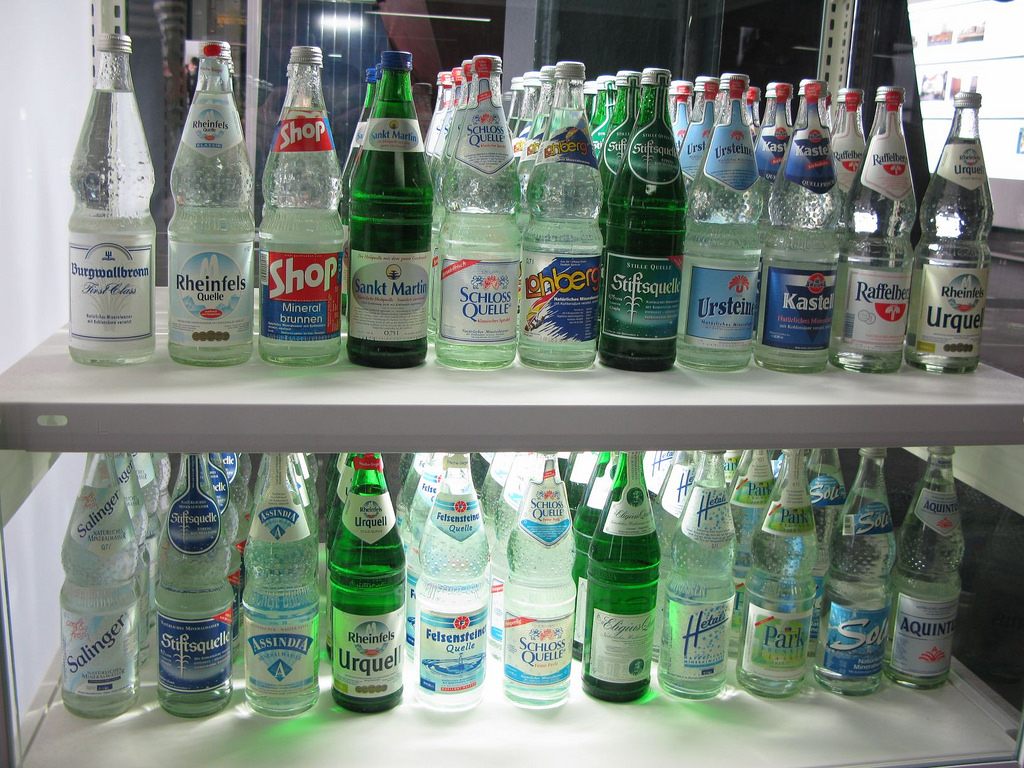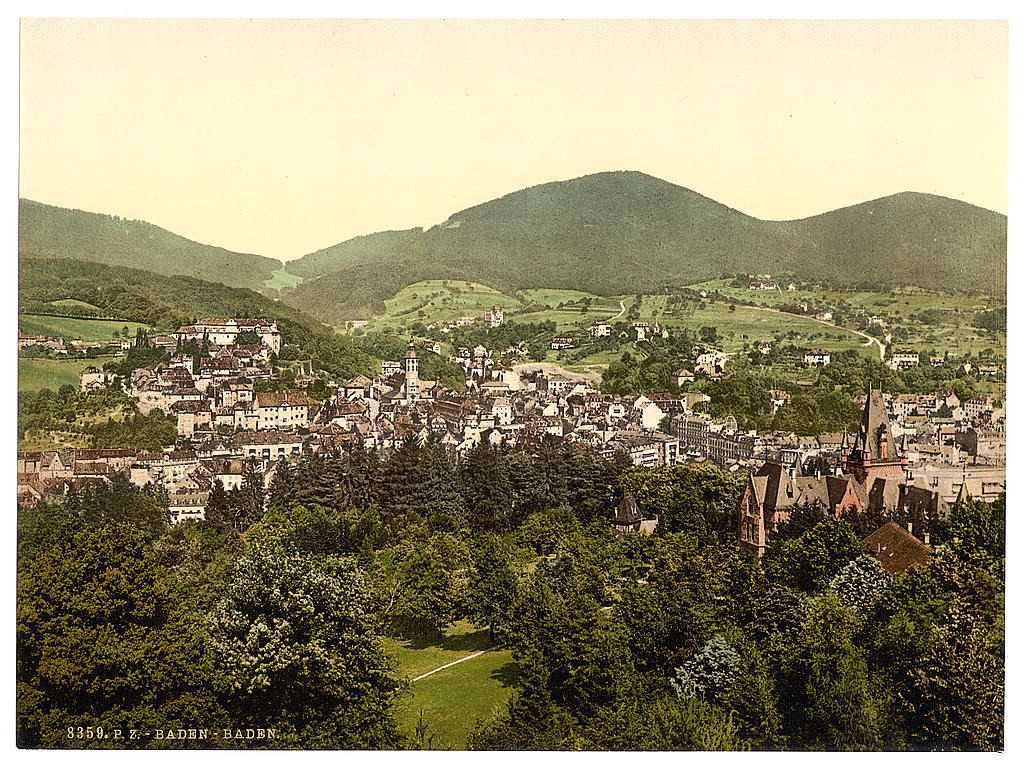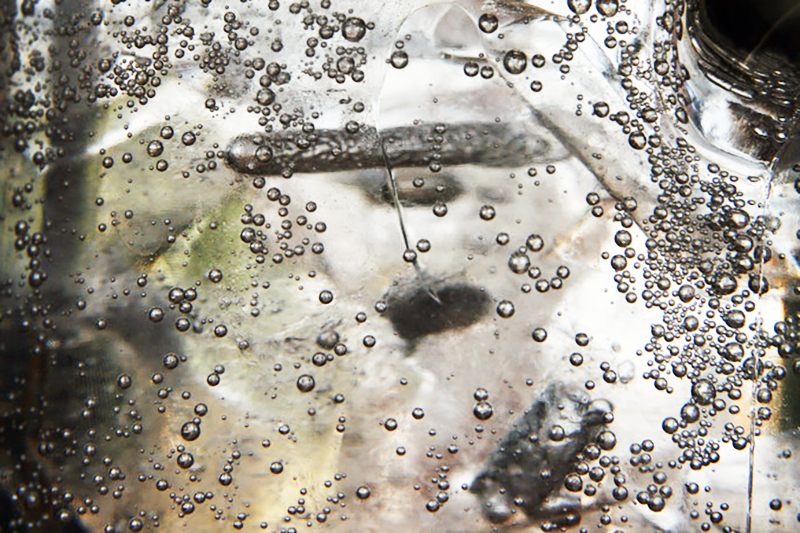Germans Are the World’s Most Discerning Seltzer Connoisseurs
Don’t mess with mineralwasser.

The seltzer market in North America is blossoming; the old standards (Polar, Canada Dry, Schweppes, Perrier) are more successful, and smaller regional brands (LaCroix, Hal’s New York Seltzer Water) are popping up outside their respective home territories. Seltzer is cool now! But to figure out where the love of carbonated water came from, we have to take a trip to Germany, where the fondness for bottled water is as pure as the Bavarian springs.
German mineral water culture dates back to the time of Caesar and Augustus, who conquered the area now known as Germany in the early 1st century. The Romans, with their incredibly strong spa/bathing culture, were very excited by the many sick springs they discovered in “Germania,” and began an intense love affair with natural water that never left the German psyche.
In 1767, an Englishman named Joseph Priestly figured out a clumsy but effective way to carbonate water by messing around with sulfuric acid and powdered chalk. He wrote a paper about it, which was mostly ignored, except a few years later, a German living in Geneva read the paper and got some big ideas. By this time, partly thanks to torrid sanitary conditions in the rapidly industrializing cities of Europe and partly thanks to a renewed spiritual belief in the healing power of water, mineral water was having a renaissance. Very trendy stuff, and potentially very profitable.
Several of the mineral springs in Germany are naturally carbonated. One of those is in a town called Selters, which eventually gave us the word seltzer. Carbonation was prized as an element of some carbonated waters, and also probably enjoyed for the same reason it is today—because it’s a fun feeling in your mouth. That Swiss-German guy decided to capitalize on this by artificially carbonating some spring water, making cheaper, but luxurious-feeling, healing waters.
The Swiss-German guy’s name was J.J. Schweppe, and he began selling his bottled carbonated water in 1783. Schweppes might be the most successful international seltzer brand to come out of German seltzer culture, but if that’s all you know, you’re missing out on a very deep and instinctive love of fizzy water embedded in the German palate.

Today, Germans have water sommeliers, rating systems, and firm preferences. Mineral water—mineralwasser, in German—is by far the most popular non-alcoholic beverage in the country. “It’s definitely much more prevalent than soft drinks, and it always was, I would say,” says Arnim von Friedeburg, the owner and managing partner of CMA Foods, an agency and online retailer that promotes German cuisine. Tap water in Germany is of excellent quality, and yet if you order it at a restaurant, says von Friedeburg, you’ll reveal yourself as a tourist. There is perhaps no other country that ignores its high-quality municipal tap water to such a degree.
Germany, according to a 2015 survey, ranks fourth in the world in per capita for bottled water consumption. The European Federation of Bottled Waters puts Germany’s consumption at 177.3 liters per person per year. But that’s sort of misleading; the top two countries on that list, Mexico and Thailand, have unsafe municipal tap water systems. Italy, in third place, has tap water that is generally safe to drink, but often considered gross-tasting; with a high calcium content (also known as “hard” water), it can also leave mineral deposits in pipes and any machines that use water. Fearing clogged coffee machines, Italians turn to bottled water.
But we’re not just looking at mineral water here; we’re looking at seltzer. And Germany just crushes every other country in sparkling water consumption. Seventy-eight percent of Germany’s bottled water consumption is carbonated. In the entire EU, only 40 percent of bottled water is carbonated, which means Germany is almost singlehandedly fighting the good fight for seltzer, drinking almost 138 liters of the stuff per year. Americans, just for comparison, drink fewer than 5 liters of sparkling water per year.

Mineral water is, by German law, completely unaltered and unfiltered (with the exception of carbonation) water taken directly from a spring. It includes, thanks to the lack of filtration, a number of dissolved solids, which might include calcium, magnesium, and various salts. It might also contain dissolved carbon, which can make it effervescent.
Beginning in the mid-1800s, right after Schweppe started raking in the money from his bottled seltzer, German companies began buying whole springs, digging them deeper to better pull out the water, bottling it, and selling it. The German government soon started regulating it to ensure both purity and safety. Today, says von Friedeburg, mineral water boasts the strictest regulations of any food in Germany.
There are few national brands; Gerolsteiner and Apollinaris might be the Coke and Pepsi of mineral waters, but beyond that, brands are not generally carried outside their specific region. Because of the high number of springs and the distinctly different flavor of the water that comes from each of them, there are hundreds of mineral water brands throughout the country, the vast majority only available in close proximity to the spring itself.

When traveling in Germany, it’s the norm to sample whatever the local mineral water is. Typically, says von Friedeburg, you’ll be asked simply “mit oder ohne gas?” The option isn’t tap water, sparkling water, or soda; the option is to have your mineral water—because that’s the only water any German would have—either still or carbonated. Carbonated is much more popular. The variety of mineral water is most likely to be simply whatever the closest, or preferred, brand is. It’s as if it was assumed that, when dining in the U.S. you would order a Coke in Atlanta, or a Moxie in New England.
Germans very rarely put ice in carbonated or mineral water; they want to really taste the flavor of the water, and consider it sort of weird that Americans tend to demand their soft drinks be ice-cold.

Carbonated mineral water is often advertised in different ways based on the degree of carbonation. You can find “mild” or “medium” carbonation, along with other descriptions of the mineral content of the water. But because these waters are unfiltered, there’s a distinctly different flavor to all of them, and Germans often have a strong attachment to the water brand they grew up with. Von Friedeburg’s favorite is Rosbacher, which happens to be the brand served on Lufthansa flights*.
As for non-German carbonated waters, some Germans may scoff. Von Friedeburg lives in Washington, DC, and drinks San Pellegrino and Perrier, but only reluctantly. “They have much less mineralization than the average German water, and I like the mineralization, he says. “It gives a flavor and a certain gravitas to the water, and I don’t find that with Pellegrino. But I buy it because I like the bubbles.”
Germans are responsible for whatever minor seltzer culture exists in the United States. The very first water sommelier in the U.S. is a German guy. The first wave of Jewish immigrants to come to the U.S. were largely German, and brought their love of seltzer with them. Starting in the 1880s, small delivery businesses began popping up to delivery locally made carbonated water to the Jewish communities throughout New York City, and as with the bagel, what’s good in the Jewish community usually becomes popular in New York City as a whole.
“Sparkling water has been one of the sectors of the nonalcoholic beverage industry in the U.S. that’s been growing significantly,” says Duane Stanford, the executive editor of Beverage Digest. But some of its German roots are dying out. “I think [in] the Northeast, New York, seltzer is the word you’ll hear a lot. You won’t really hear that in the South,” says Stanford, who is a Southerner. “Nobody in the South walks around saying, ‘give me a seltzer.’”
The regional brands like LaCroix and Hal’s still count their biggest markets in big cities, especially in the Northeast. But the original, Schweppes, remains one of the biggest national brands—even if they call their products “sparkling water” and “club soda” instead of tafelwasser mit gas.

In general, humans tend to like carbonated water—carbonation as a whole, really—for a few possible reasons. One is that, like with spicy foods, the presence of carbon dioxide can trigger a minor pain reaction, which can induce a flow of endorphins. Pleasure and pain being all knotted up in the neurotransmitters of the human brain, we can sort of trick ourselves into getting some nice pleasure feelings by indulging in acts our brains interpret as dangerous but which aren’t actually dangerous at all—like spicy food or carbonation. It’s sort of like a roller-coaster. You do it not because it’s dangerous, but because your brain will think it’s dangerous, which gives you a fun thrill. Loving spicy food is linked with liking other thrill-seeking behaviors, like roller coasters.
Germany ranks fourth in the world in number of roller coasters. I’m not sure if that’s connected; I suggested it to Von Friedeburg, who seemed to think it was a fun comparison, but he didn’t feel comfortable generalizing about whether the country has some kind of universal love of risk-taking.
Another possible reason for the German love of carbonation is that carbonation isn’t just a textural adjustment; it changes the flavor of the water as well. Carbonating water creates carbonic acid, which is, like its name suggests, sour. Perhaps Germans, already accustomed to noticeable mineral flavors in their water, found the added acidity in carbonated water pleasant rather than off-putting.
Von Friedeburg mentioned that carbonation runs deeper in Germany than in other countries. They may not drink soda, but the alcohol of choice is beer, which in Germany is almost always carbonated. “We are drinkers of beer, and beer usually has carbonation. So that could be—and I don’t know it for a fact—that the acquired taste for beer and its carbonation leads to a taste for carbonated water,” he says. But mostly, he thinks that it’s just what Germans drink, and what they have always drunk.
*Correction: The story originally referred to Lufthansa train rides. Lufthansa, an airline, flies.










Follow us on Twitter to get the latest on the world's hidden wonders.
Like us on Facebook to get the latest on the world's hidden wonders.
Follow us on Twitter Like us on Facebook